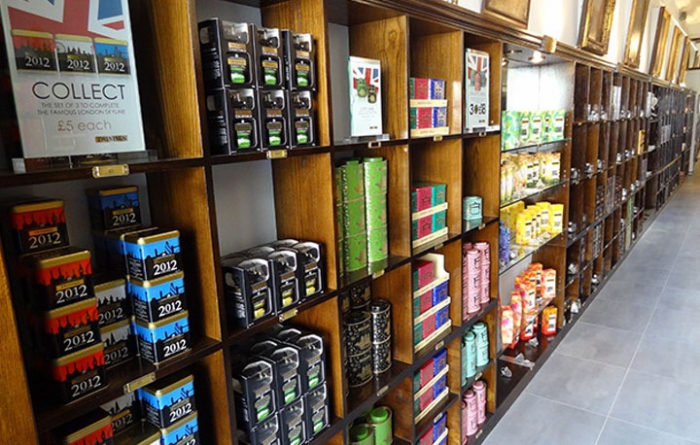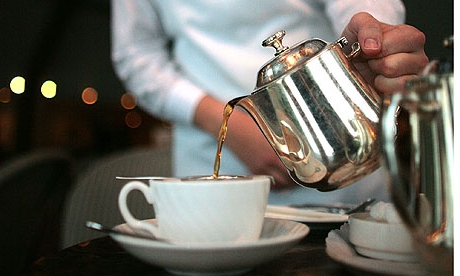
In our country, a culture of tea drinking is gradually taking shape. This is not to say that most compatriots understand the quality of this drink and are willing to pay normal money for it. Drinking tea from a bag is still the dominant position among the population of Russia and other former Soviet republics, but not the only one.
More and more citizens traveling abroad or at least visiting coffee houses, a teahouse and other establishments that serve high-quality leafy drinks in teapots prefer to buy the same for home use. In this regard, specialized stores that are able to offer a diverse assortment of really good tea brought from different parts of the world are becoming in demand.
It's time to take advantage of unmet demand and open such a place on your own. But first you need to draw up a detailed business plan. A tea shop, organized in accordance with all the rules and taking into account all the nuances of this business, can become a successful, profitable and rapidly developing enterprise.
We answer urgent questions.
The initial task of the entrepreneur is to analyze the tea market in his city and region as a whole. Which companies work? Who is the leader? How many shops do each organization have and in what parts of the city are they located? What assortment do they offer, what is missing, and what is “gathering dust” on the shelves, remaining unclaimed?
Answers to these questions will greatly clarify the situation in which you have to work, and will allow you to take into account various nuances, opening your own Tea Shop business. Next, we will consider the main points that should definitely be included in the business plan.
The first stage - the choice of place and interior
Finding a suitable room with a good location is not easy, but possible. Ideal in this case would be a place with a large cross and an acceptable cost of rent. It is unlikely that your customers will want to go to the other end of the city in order to buy some tea. So open as close to them as possible.
It can be a center, any lively area with other shops nearby (but not tea!), A department in a large shopping center, or a place near a popular cafe. Usually, although not always, the purchase of tea is impulsive, not planned in advance. Therefore, you should be clearly visible, and you should want to go (this applies to design and signage).
Interior design
A tea shop may be small in size, but not cramped. If there is too little space, some of the buyers will literally be "screened out" - those who wanted to go in and could buy something, but did not go because of crowds in the store. Be sure to take care of a separate room for the warehouse - enough 7-10 square meters. Tea stocks will be stored here. At the same time, it should be warm, dry and dark inside to prevent spoilage or loss of properties of the drink.
Make the main hall cozy and beautiful, be sure to place tea windows around the perimeter. Do not forget about the shelves for related products, which can increase sales by up to 50%. The most important thing is that customers are pleased to be in your store and want to buy something at home. By the way, the smell of various types of tea contributes to this.
The second stage is the search for personnel
The people who will work in your store are a key link to success.As a rule, buyers are not very good at tea. In the supermarket, knowledge about him will not be useful. But the tea shop is a business aimed at instilling a culture of tea drinking for the population. After all, this is the key to the growth in the number of potential buyers who can become regular guests.
Therefore, the store staff should be well versed in all matters related to the drink: varieties, brewing technologies and methods of use, properties and effects on the body. The more a specialist knows, the better he will be able to serve a visitor, the more chances are to make him a buyer and make him return again. In addition, there are quite enlightened guests in this matter. Agree, it’s not very good if the buyer knows more about the product than the seller.
The role of sellers of a tea shop is more suitable for women, with a middle age of 30-40 years. It’s great if they are sincerely interested in tea and are willing to share knowledge with others. The main qualities are goodwill, poise, but at the same time activity. A falling asleep seller is not a very attractive sight.
Be sure to include labor costs in your business plan. A tea shop operates, as a rule, as follows. Part of the salary is a fixed salary (7-10 thousand), part is the percentage of sales. This will encourage employees to work well and quickly.
The third stage is the creation of an assortment
This item is probably the most important in this business. Tea must be of high quality, and there must be plenty of it. Both criteria must be taken into account and try to comply in the best way. Tea will have to be purchased from suppliers from different countries, because it cannot only be based on a Chinese product, for example, the whole business is built.
A medium-sized tea shop offers from 50-100 to 200 varieties of a drink from at least three to four countries. It can be both domestic (Krasnodar, etc.) and foreign tea (Japanese, German, Indian, etc.). It is best to personally communicate with potential suppliers to discuss all issues of cooperation, to make sure of the quality of the drink and the reliability of the manufacturer.
To expand the range, you can attend exhibitions dedicated to tea. It gathers both merchants and importers-exporters, dealers and other representatives of the tea business. Travel costs should also be included in the business plan. If possible, the tea shop should offer all types of drink: black, red, white, green, herbal and fruit, as well as a variety of varieties.
Recently, South African drinks such as rooibos, khanibush and others have been very popular. They are especially interested in people leading a healthy lifestyle. By the way, this can be emphasized by offering them to customers.

When entering into a collaboration, you should have a good idea of what kind of supplier it is and how it works, read reviews about it, and talk in person. The fact is that in most cases the work is based on 100% prepayment, so the risk of non-delivery should be minimized.
Accompanying goods
In addition to the tea itself, offer your customers additional attributes. First of all, these are all kinds of tea products: natural jams and preserves, honey, nuts and dried fruits, sugar in various variations. Secondly, accessories: teapots, strainers, tea sets and just cups, thermoses and more. Often these products make up 40-50% of the total tea shop sales.
The fourth stage - store registration
The best form of organization for a small tea shop would be a limited liability company (LLC). Legal registration will take no more than two weeks and about 5-6 thousand rubles. However, some documentation will have to be collected first.
This is a trade license, as well as certificates from tea suppliers confirming the quality of your products.In addition, to open a tea shop, you will need to prove the legitimacy of the goods by providing invoices, invoices and other supporting documentation from the supplier.
In your shop, among other equipment, there must be a cash register. And as one of the main employees - an accountant who will keep accounting and tax records.

The fifth stage - advertising
You can skip this point altogether, since a good tea shop will advertise itself, being located in a place that is quite noticeable to the eyes of passers-by. But additional PR will not hurt if there are available funds.
This can be multidirectional advertising - an attractive sign (should be on the first place in this matter), distribution of leaflets near the place of sale, advertising in a magazine, for example, devoted to interesting places of shopping in your city. You can also negotiate with one of the nearby coffee houses and leave them with their own business cards, which the waiters will hand over to visitors in a folder with an account.
But the best advertisement will be the reputation of your store. If people like goods and services, they will come back again and bring family and friends with them. This is what needs to be emphasized in order to succeed.

Sixth stage - cost calculation
What is the amount of investment required to open the Tea Shop business? How much does it cost to equip a store and purchase the first batch of tea and related products? Costs can vary significantly depending on a number of factors:
- the size of the rented area and the location of the store;
- breadth of assortment, volumes of purchase;
- number of staff;
- expenses for repair and interior decoration.
On average, the costs will be as follows:
- renting a room with an area of about 30 squares - 60 thousand rubles (and, most likely, you will have to immediately pay for the first and last month, that is, 120 thousand);
- purchase of tea and additional attributes - from 100 thousand rubles or more;
- purchase of equipment (showcases, cash register) - 100-150 thousand;
- repair and decoration of the premises - from 50 to 300 thousand rubles;
- salary to employees (minimum composition - two sellers, accountant, administrator) - from 60 thousand rubles;
- company registration, collection of necessary documents - about 6-10 thousand rubles.
On average, investments will amount to about 600-800 thousand rubles or more. At the same time, one outlet can earn 150-250 thousand rubles a month in profit with an average price of tea of 80-100 rubles per 100 grams. How long will the tea shop pay off? The profitability of the business with successful development will be 15-30%, and after 6-12 months of successful trading, it will start to generate very good profits, having fully paid off.

Conclusion
Before starting any new business related to financial investments, you need to draw up a detailed business plan. A tea shop is no exception. Due to a number of nuances relating to these products, a miscalculation in any of the above paragraphs can turn a potentially successful business into a failed unprofitable enterprise.
Therefore, carefully study all the moments associated with organizing your own tea shop in relation to your region, and only then begin to take steps to implement the idea. Good luck in your endeavor!








